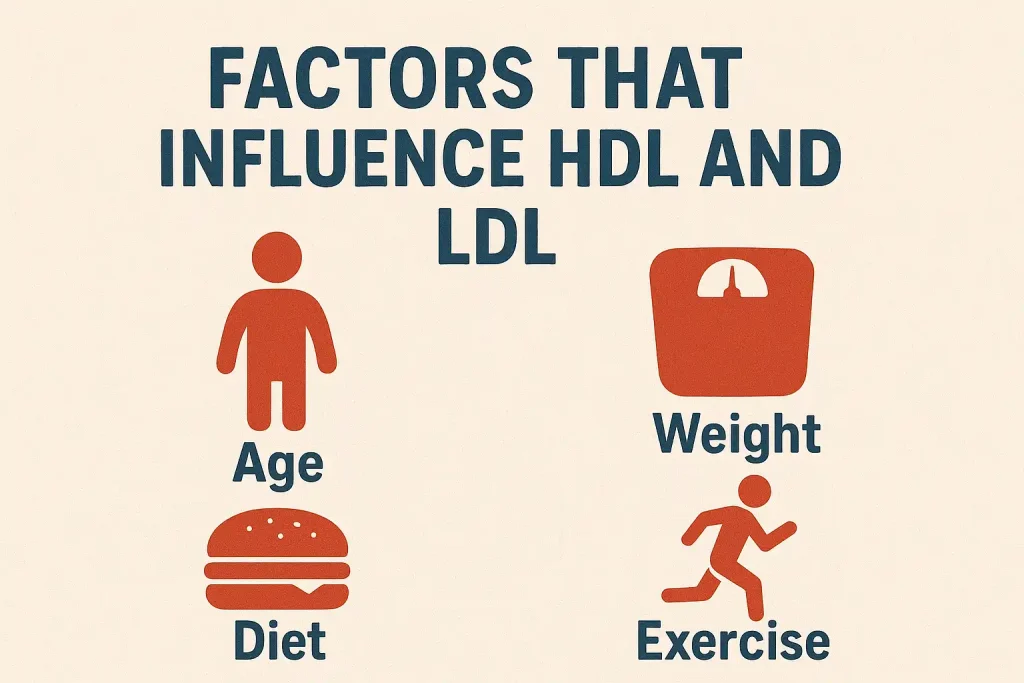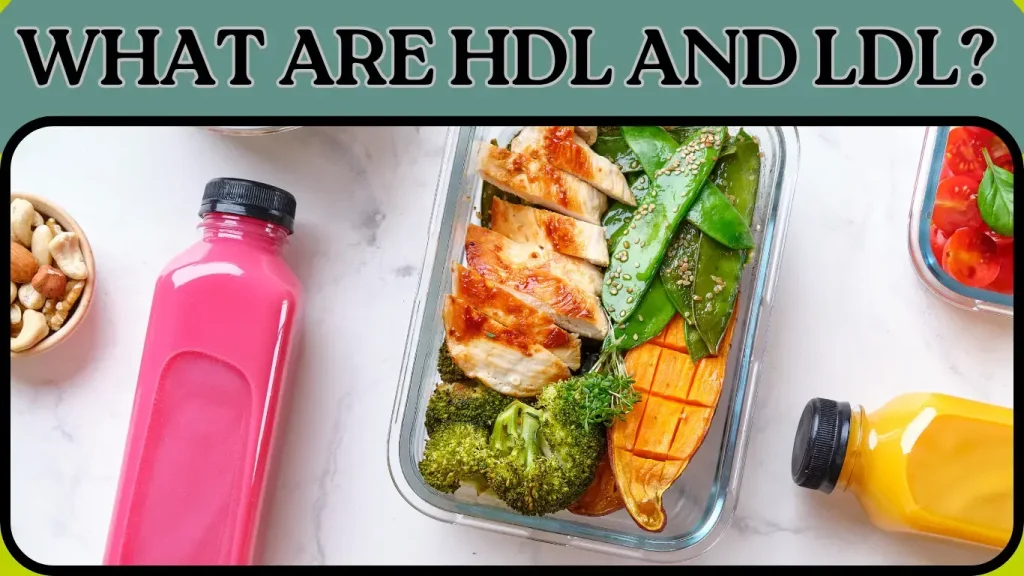You’ve probably heard doctors mention “good” and “bad” cholesterol. But what do HDL and LDL actually mean? These are two types of lipoproteins that help manage cholesterol in your body. Knowing the difference between them can help you take better care of your heart and overall health. In this article, we’ll talk about “What Are HDL and LDL?”
Understanding Cholesterol
Cholesterol isn’t all bad—it’s a waxy, fat-like substance found in every cell of your body. Your body needs it to make hormones, vitamin D, and things that help you digest food. But having too much of it in your blood can be a silent danger.
Types of Cholesterol
There are three main types of cholesterol-carrying particles:
- HDL (High-Density Lipoprotein) – the “good” kind
- LDL (Low-Density Lipoprotein) – the “bad” kind
- VLDL (Very Low-Density Lipoprotein) – mainly carries triglycerides

What Is HDL?
HDL, or High-Density Lipoprotein, acts as the cleanup crew of your bloodstream. It collects excess cholesterol from other parts of your body and carries it back to your liver. After that, your liver acts as a machine to remove this excess cholesterol from your body.
That’s the reason HDL is often referred to as“good cholesterol.” It helps to prevent blockages in your arteries, keeps them clear, and ultimately prevents heart attacks and strokes.
Benefits of HDL
HDL offers several health benefits:
- Removes excess cholesterol: Prevents collecting and block the arteries.
- Protects heart health: Reduces risk of heart disease and keeps heart healthy.
- Anti-inflammatory properties: Helps fight arterial inflammation, keeping blood vessels flexible and without narrowing.
Higher HDL levels are associated with a lower risk of heart disease and stroke.
What Is LDL?
LDL, or Low-Density Lipoprotein, is called “bad cholesterol.” Its role is to bring cholesterol to cells all over your body. But when there’s too much LDL, it starts putting cholesterol on the walls of your arteries—this can lead to plaque buildup.
Dangers of High LDL
Too much LDL can lead to:
- Plaque buildup in arteries (atherosclerosis)
- Reduced blood flow
- Increased risk of heart attack and stroke
Think of it like clogged pipes—when cholesterol builds up, it narrows your arteries, making it harder for blood to flow smoothly.
HDL vs. LDL: The Key Differences
| Feature | HDL (Good) | LDL (Bad) |
|---|---|---|
| Function | Removes cholesterol from arteries | Deposits cholesterol in arteries |
| Density | High | Low |
| Health Impact | Protects heart | Increases heart risk |
| Ideal Level | Higher = Better | Lower = Better |
Keeping HDL high and LDL low is the golden rule for heart health.
Ideal Cholesterol Levels
According to health experts:
- HDL: 40 mg/dL or higher (men), 50 mg/dL or higher (women)
- LDL: Less than 100 mg/dL is optimal
- Total cholesterol: Below 200 mg/dL is desirable
Regular blood tests can help monitor these levels and prevent future health issues.
Factors That Affect HDL and LDL Levels
Several factors influence cholesterol levels, including:
- Genetics: Some people naturally produce more cholesterol.
- Diet: Saturated fats raise LDL, while unsaturated fats improve HDL.
- Exercise: Regular activity boosts HDL levels in your body.
- Smoking: Lowers HDL and damages blood vessels.
- Alcohol: Moderate intake can increase HDL, but too much harms the liver.

How to Increase HDL Naturally
Want to boost your good cholesterol? Try these simple lifestyle changes:
- Eat healthy fats – like olive oil, nuts, and avocado.
- Exercise regularly – even brisk walking helps.
- Quit smoking – HDL levels rise once you stop.
- Drink moderately – small amounts of red wine or beer may help.
How to Lower LDL Naturally
To control LDL levels:
- Avoid trans fats – often found in fried and processed foods.
- Eat more fiber – oats, beans, and fruits bind cholesterol in the gut.
- Include omega-3s – fatty fish like salmon improve heart health.
- Maintain a healthy weight – obesity raises LDL and lowers HDL.
Medical Treatments for Cholesterol Imbalance
If lifestyle changes aren’t enough, doctors may prescribe:
- Statins: Help lower LDL production in the liver.
- PCSK9 inhibitors: Boost the liver’s ability to remove LDL.
- Lifestyle programs: Diet, exercise, and stress management combined for long-term success.
Myths About Cholesterol
Let’s clear up some common myths:
- “Cholesterol is always bad.” – False! Your body needs it for essential functions.
- “Only overweight people get high cholesterol.” – Genetics play a huge role too.
- “Medication alone can fix cholesterol.” – True improvement comes from lifestyle changes.
Conclusion
In this article, we discussed “What Are HDL and LDL?” HDL and LDL may seem like small components of your blood, but they have a significant impact on your health. HDL helps clean up your system, while LDL can cause blockages. Maintaining a healthy balance through good eating habits, regular exercise, and routine checkups is key to keeping your heart healthy for a long time.
FAQs about What Are HDL and LDL?
- What is the main difference between HDL and LDL?
- HDL removes cholesterol from the bloodstream, while LDL deposits it in the arteries, leading to blockages.
- Can I increase HDL with diet alone?
- Yes, foods rich in healthy fats—like olive oil, nuts, and fish—can naturally boost HDL levels.
- What foods increase LDL levels?
- Fried foods, processed snacks, red meat, and dairy products high in saturated fats can raise LDL levels.
- How often should I check my cholesterol?
- Adults should check their cholesterol every 4–6 years, or more frequently if they have heart risk factors.
- Can children have high cholesterol?
- Yes, especially if there’s a family history of cholesterol issues or poor dietary habits.
If you have any questions about “What Are HDL and LDL?,” feel free to reach out to us or leave a comment below.

